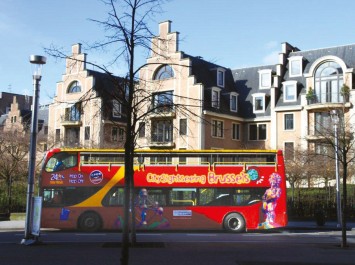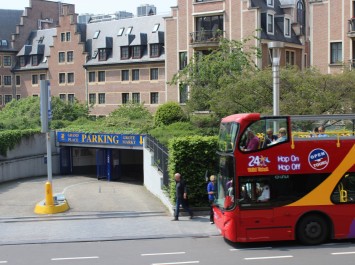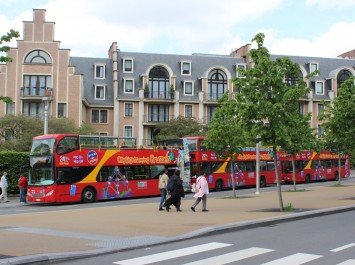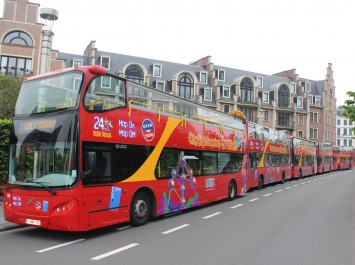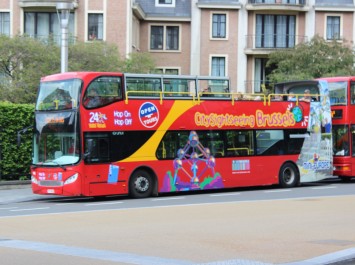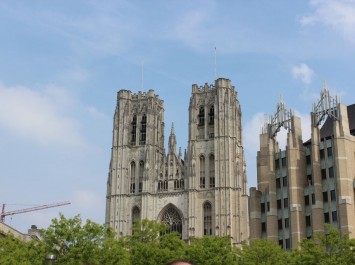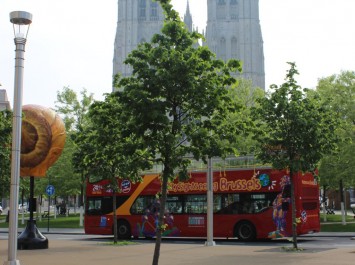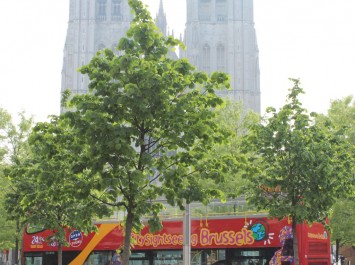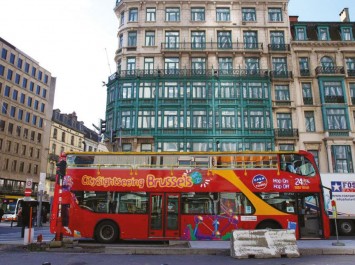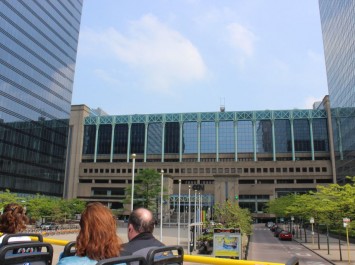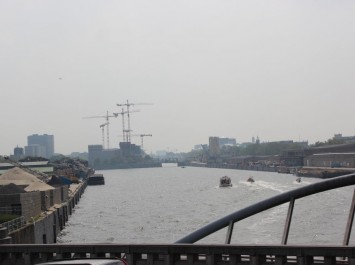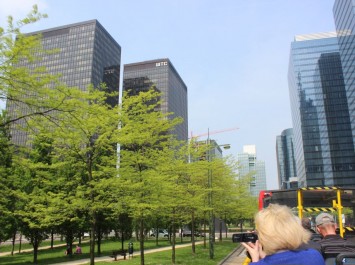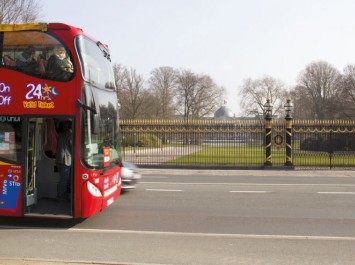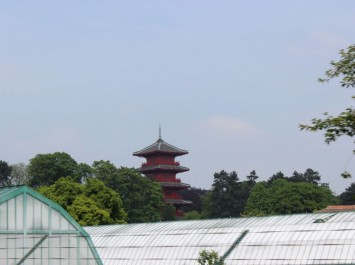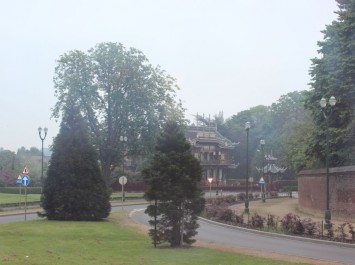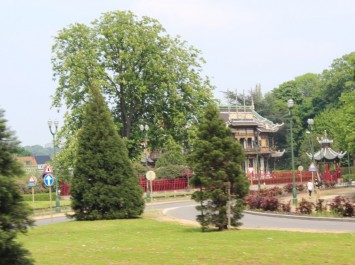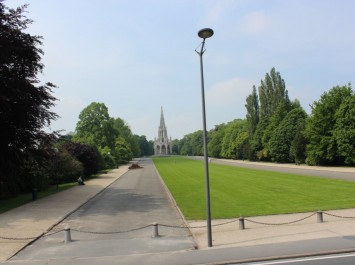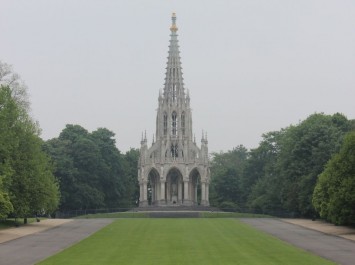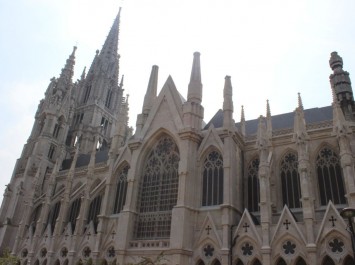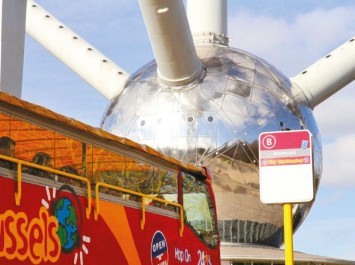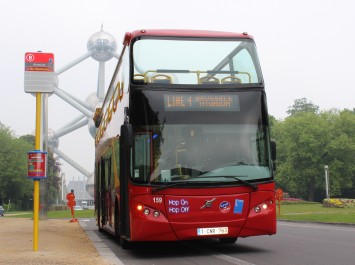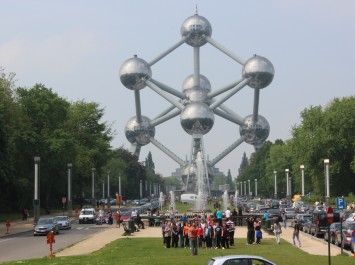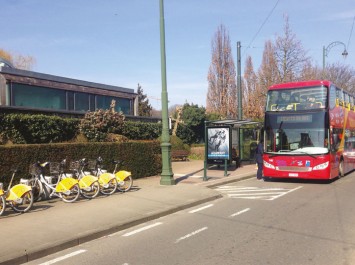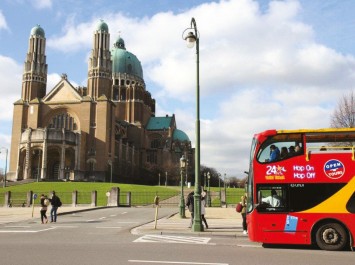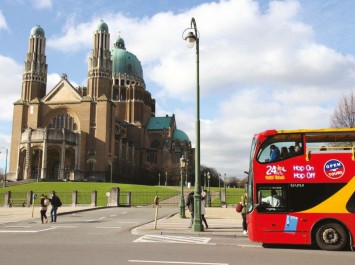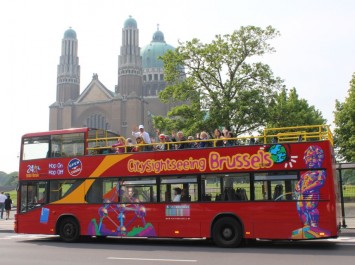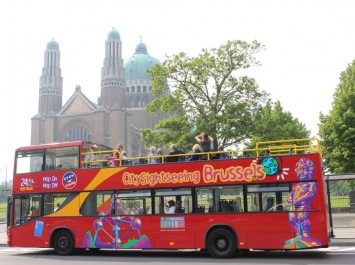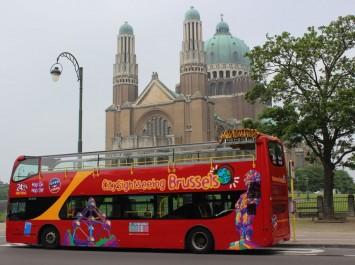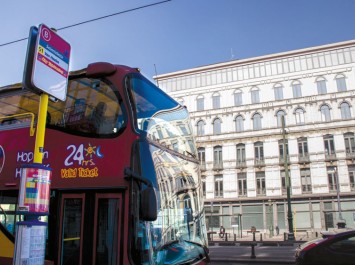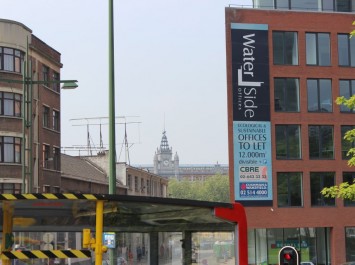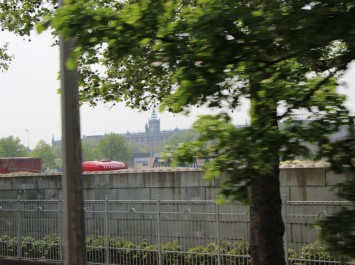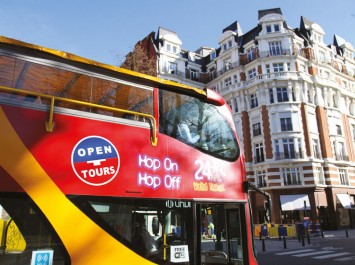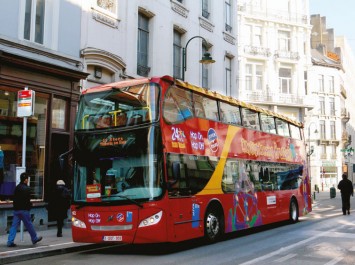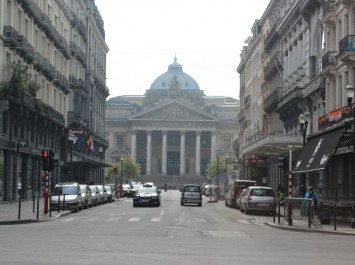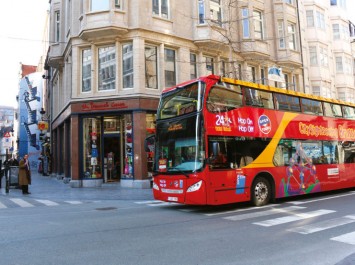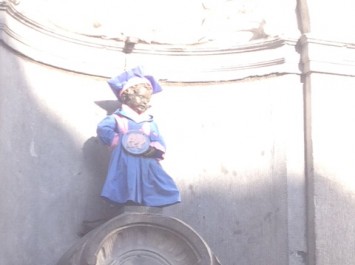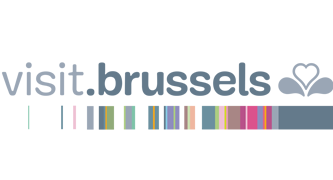Central Station
The Grand Place is a UNESCO World Heritage site. Its construction began in the 15th Century. First of all, some market halls and trade guild houses, then a town hall to establish the authority of this trading center. Bombarded for 3 days by the French army in 1695, it was almost completely destroyed but, like a phoenix, it went on to rise from the ashes in 3 years. That's why four styles stand alongside each other or sometimes even overlap: it's a wonderful hotchpotch of Gothic, opulent Baroque, Neoclassical and Neogothic.
In the Rue des Sables 20, you can find the Belgian Comic Strip Centre. It is a former Waucquez store built in 1906 by Victor Horta, the CBBD benefits from volumes and light characteristic of Art Nouveau. Looking back at the 60 years of history of the 9th Art in Belgium, the collection gives pride of place to Hergé, Tintin's father. There is even a reading room for devouring them on the spot.
The Cathedral of Saints Michael and Gudula is a Brabant Gothic-style cathedral that takes us back to the 13th century into the atmosphere of the great builders. Its two towers give it the French look of the period. It is the most important church in Brussels. Our Royal Family still holds its marriages in this church.
The MOOF or Museum of Original Figurines shows the 9th art transposed into figurines along a themed trail for (re)discovering the great heroes and myths of Comic Strips.
Rogier
From Rogier you can go to Botanique, City 2 shopping mall and the Rue Neuve with lots of shops. All the big chain stores are here: little shops, shop-in-shop brands and labels. It is the perfect place for everyday shopping.
Royal Greenhouses
The Royal Greenhouses of Laeken were King Leopold II's idea for this extraordinary set of greenhouses to be built by the architect Alphonse Balat, assisted by his pupil Victor Horta, in the park adjacent to the royal castle. They are open for visitors from mid-April to early May.
The Church of Notre-Dame de Laeken was erected in the 19th century in Early English Gothic style and was dedicated to Marie-Louise, first queen of Belgium. It houses the Royal Crypt where the members of the dynasty are buried.
The Laeken Cemetery ornamented with monuments, each more amazing that the last, is nicknamed the 'Père-Lachaise belge', comparing it with the famous cemetery in Paris. The works of art include a copy of 'The Thinker' of Rodin.
Three buildings with a strange architecture are since hundred years part of the image of Brussels: the Japanese Tower, Chinese Pavilion and the little Museum for Japanese Art. They were realized in the beginning of the XXth Century on demand of king Leopold II. The architect, Alexandre Marcel, called French artisans and Belgian laborers, but he also brought decorative pieces of China and Japan. The oriental aspect makes from the 3 buildings a well known touristic attraction, but they host also masterpieces from the Chinese and Japanese collections of the Royal Museum of Art and History.
Atomium
The Atomium, inaugurated on the occasion of the 1958 World Fair and fully renovated in 2005, it was built on the model of an iron crystal enlarged 165 billion times. It offers the most spectacular views of Brussels and Brabant from the top sphere, where there is also a restaurant. Each sphere refers to a Belgian personality.
Mini-Europe gives you the opportunity to travel in a few minutes from the Big Ben in London to the gondolas in Venice. With its 350 high quality scale models, it shows Europe's leading cities at the foot of the Atomium. With your ticket you have a reduction at the entrance or you can buy a combi-ticket online.
Océade is a tropical water park. Try the Anaconda, the greatest family waterslide, the mini-waterslides for the kids, the giant waterslides for all kinds of thrills and spills. And enjoy the many activities, Saunaland and the warmest beach in the country.
The Planetarium gives you a fascinating and entertaining time gazing the stars. The sky will hold no more secrets for you.
The King Baudouin Stadium is the place for sports- or other manifestations.
The Ren� Magritte Museum, house of the artist.
The Magrittes rented the apartment on the ground floor which was carefully reconstructed with the original furniture. At this address Magritte created almost half of his production. On the upper floors 30 gouaches and drawings are exhibited. A collection of about 400 documents, photos, letters and objects illustrates the career of the artist.
Koekelberg Basilica
The National Basilica or the Basilica of Koekelberg is the fifth largest church in the world and the largest Art Deco edifice ever built. It houses the Musée des Soeurs Noires (Museum of Black Sisters) and the Musée d'Art religieux moderne (Museum of Modern Religious Art).
Brussels Aquarium is a permanent exhibition of 47 aquariums from 5 continents, illustrating the kingdom of fish, amphibians and other invertebrates.
Tour & Taxis
The magnificent Tour & Taxis buildings are formerly royal warehouses and transshipment storage depots. When the European Union was founded, with the elimination of customs barriers, Brussels had to find a new use for them, and now they are home to great cultural exhibitions, professional salons, a large number of businesses, restaurants and a genuine 800 m² Turkish bath.
During summer period, at the other side of the canal you have 'Bruxelles-les-bains' it is the 'beach' of Brussels. Sand and other festive activities are brought to bring summer in the city.
Dansaert
Dansaert street is the place where the designers are well established. Here you will find vintage, on-trend, minimalist, baroque and more.
The Marché aux Poissons is the place with may welcome restaurants and outside terraces where you can enjoy fresh fish and other seafood. Everything here is a reminder that Brussels was formerly a very busy trading port, which was refilled in several stages. The streets bear the names of quays.
Stock Exchange
Saint Géry is one of the most popular design districts with Dansaert. The perfect spot for creating a trendy wardrobe for yourself and an original interior. The Halles Saint-Géry marked the origin of Brussels in the 10th Century.
The Marolles
The Marolles is a popular, historic and touristic neighborhood of Brussels. It is the place of Brussels where people speak in brusseleer *, of the zwanze ** and of authenticity. Today, many artists, art galleries and craftsmen create a unique spirit in the hood. The daily antiques market at the Place du Jeu de Ball is a must-see.
* Brusseleer: name of the Brussels dialect, language
** Zwanze: way of living with a typical Brussels sense of humor
Manneken Pis
Manneken Pis is the bronze statuette created in the 17th century by J. Duquesnoy, embodies the irreverent spirit of Brussels. It was one of the many fountains serving the city. From being a public fountain, the little fellow has now become a legendary figure. It has a wardrobe of over more than 846 pieces which are displayed in an amusing exhibition at the Maison du Roi.
Planète Chocolat is a chocolate shop combining tradition and design. Guided tour of the workshop and sampling with explanations and demonstrations. With your ticket you can enjoy free demonstration during the weekend and have a reduction of 10% when you buy chocolate in the shop.
At The Waffle Factory fresh home-made Liège waffles are made, which you can eat nature or with strawberries, banana, ice cream or whipped cream and/or chocolate sauce. With your ticket you have 1€ reduction on one of these typical waffles.











